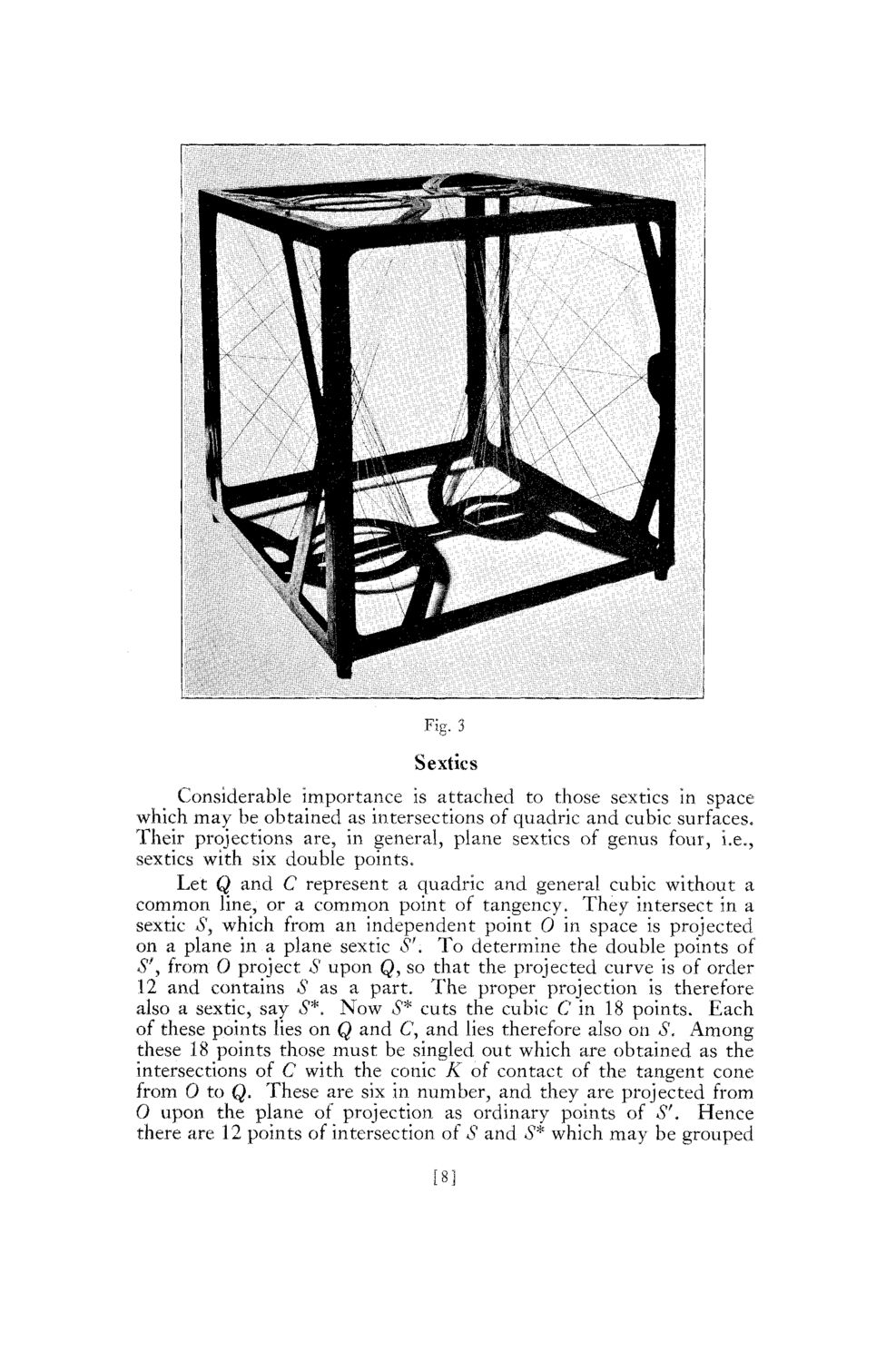| |
| |
Caption: Mathematical Models by Arnold Emch - Series 2 (1923)
This is a reduced-resolution page image for fast online browsing.

EXTRACTED TEXT FROM PAGE:
Sextics Considerable importance is attached to those sextics in space which m a y be obtained as intersections of quadric and cubic surfaces. Their projections are, in general, plane sextics of genus four, i.e., sextics with six double points. Let Q and C represent a quadric and general cubic without a c o m m o n line, or a c o m m o n point of tangency. They intersect in a sextic S3 which from an independent point 0 in space is projected on a plane in a plane sextic Sr. T o determine the double points of S \ from 0 project S upon Q, so that the projected curve is of order 12 and contains S as a part. T h e proper projection is therefore also a sextic, say S*. N o w $* cuts the cubic C in 18 points. Each of these points lies on Q and C, and lies therefore also on S. A m o n g these 18 points those must be singled out which are obtained as the intersections of C with the conic K of contact of the tangent cone from 0 to Q. These are six in number, and they are projected from 0 upon the plane of projection as ordinary points of Sf. Hence there are 12 points of intersection of $ and £* which m a y be grouped [8]
| |